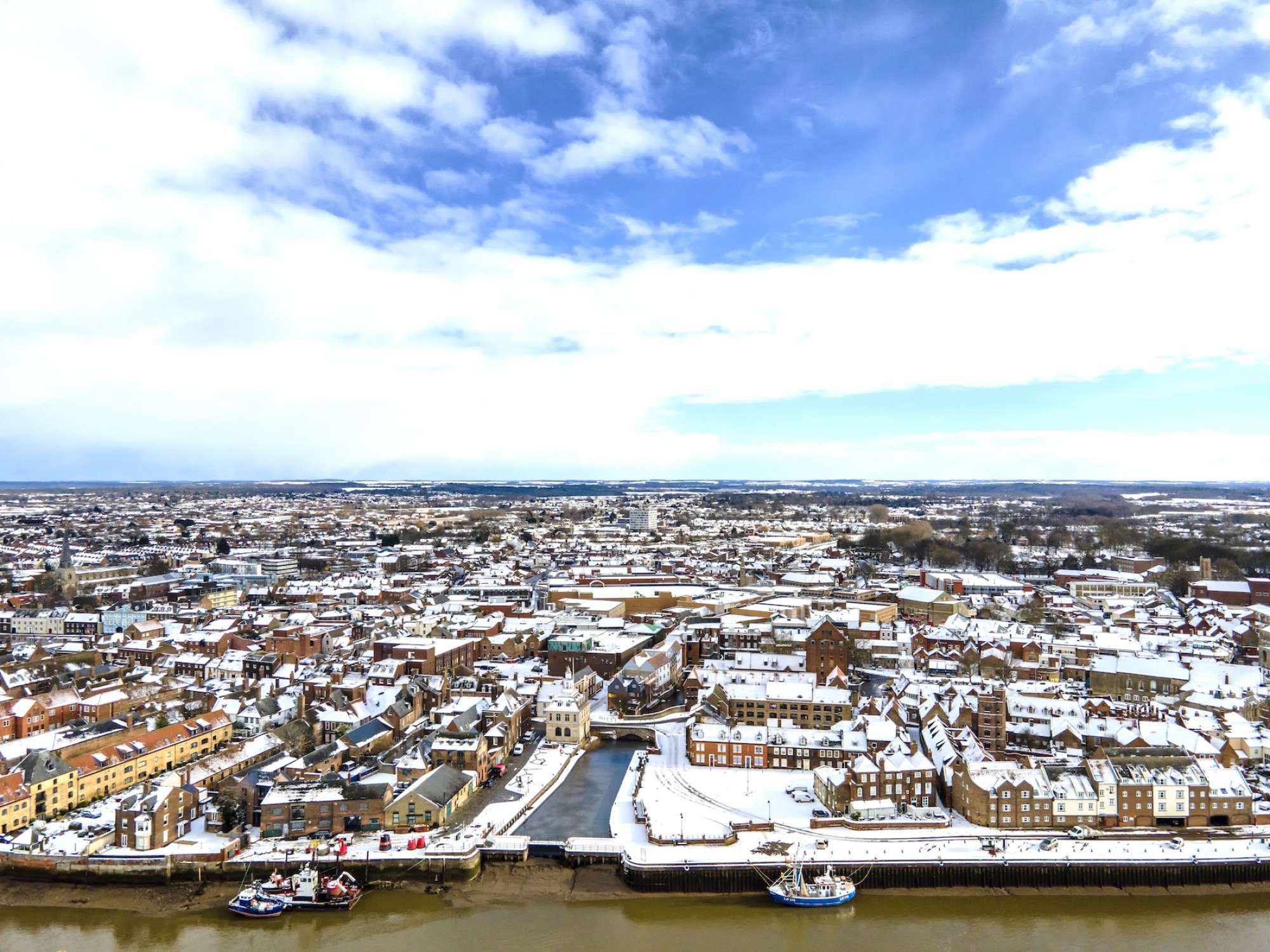
Memories of Norfolk in the snow
As skies darken and the cold creeps in, we look back at Norfolk’s snowiest winters and the chaos that came with them…
It begins with a chill in the air, a thickening of clouds and a whisper of frost across the fields and, suddenly, we’re wondering if snow might be on the way. Many now picture fleeting flurries that dust the landscape and vanish by morning, but for those who remember Britain’s harshest winters, the season once meant something more. There was a time when snowstorms weren’t just cold snaps; they were epic events, and with its vast skies and exposed coastline, Norfolk has weathered more than its fair share of legendary freezes.
The winter of 1947 remains one of the most severe in living memory, with snow falling somewhere in the country for 55 consecutive days between January 22nd and mid-March. In Norfolk, roads disappeared beneath towering drifts, railways froze and the armed services were called to support isolated villages with supplies. Temperatures rarely rose above freezing and coal deliveries stalled, leaving many families huddled around paraffin heaters in a desperate bid to stay warm.
Lorna Kirk, then just six years old in South Creake, still recalls the awe of it all.
“I remember travelling on the bus to Fakenham and being unable to see out the windows as there were piles of snow several feet high from where they’d cleared it off the road,” she says. “My mum started making soda bread when supplies ran low and we warmed bricks in the oven to place in our beds. It was so jolly cold!”
More snowy winters followed in the 1950s, captured in surviving photographs of blanketed streets, buried cars and children sledging down the sloping parklands at Sandringham. However, it was the Big Freeze of 1962–63 that brought everyday life to a standstill.
Snow began falling on Boxing Day and lingered for over 60 days, marking it the coldest winter since 1740. Temperatures plunged to -15°C near Thetford, some drifts reached 15 feet, the Broads iced over in places and parts of the sea even froze at Hunstanton. In Norwich, the River Wensum turned to ice, prompting excited children to hold football matches and skating championships on its crystallised surface.

“Drifts covered the roads, water pipes froze and each morning we scraped frost from the inside of our windows. It was like living in a snow globe,” recalls Andrew Wright, who was growing up on a West Norfolk farm at the time. “I helped dig a pathway so my dad could get his tractor and trailer into town for food. Many farmers couldn’t even reach their livestock, let alone harvest crops – it was really quite something.”
Another dramatic winter arrived in 1978–79, with blizzards battering East Anglia from late December through February. Major roads were blocked, two-thirds of Norfolk’s schools closed and power outages left hundreds of homes in darkness.
In Narborough, Brenda Dent was snowed in with her four-month-old baby and remembers being stranded for around four days. “It just snowed and snowed - drifts piled high and everywhere was covered in white. You could only tell cars were trapped by the aerials poking out,” she recalls. “There were shortages of bread, milk and fresh meat, but the community was amazing. Tradesmen tried their hardest to clear paths, farmers used tractors to help with deliveries and my elderly neighbour baked loaves to share around the estate. Everyone pulled together - it was a wartime spirit in the 1970s.”
Though less brutal than earlier decades, snowstorms in the 1980s and 1990s still brought disruption, wonder and community spirit. Many locals hold joyful memories of sledging and building snowmen, while others recall clearing pathways with shovels and long walks to deliver supplies to stranded villages. During a cold blast in January 1987, a group of scouts camping at How Hill in Ludham suddenly found themselves snowbound. What began as a weekend adventure became a test of resilience, with tents dug out from drifts, food conserved and cooked over fires and a snowball tournament held to keep spirits high.
As the 20th century gave way to the 21st, UK winters began to soften. Snow still swept across Norfolk, but the deep freezes of earlier decades became less frequent. In January 2010, a prolonged cold snap blanketed roads, closed schools and cancelled buses. Heacham became a ribbon of stranded vehicles, King’s Lynn residents trudged through knee-deep drifts to reach work, and supermarkets in towns like Downham Market and Hunstanton saw essentials fly from the shelves.
The Beast from the East in March 2018 brought another brief blast of chaos, and an icy surge in 2021 transformed familiar scenes into wintry postcards. Snow became less perilous and more picturesque, with white churches welcoming parishioners, rooftops shimmering at sunrise and Wells-next-the-Sea’s beach huts standing proud against a frozen shoreline. Children rushed out with sledges, dogs bounded along powdery paths and social media lit up with snow-covered landmarks and misty fenland skies.
Today, Norfolk’s winters may not freeze the sea or bury streets beneath deep drifts, but they still hold the power to pause our routines and stir our memories. Snow has become a fleeting visitor, more spectacle than siege, but its arrival still brings a hush to the landscape and a spark of wonder to the season.
